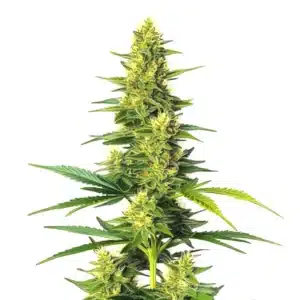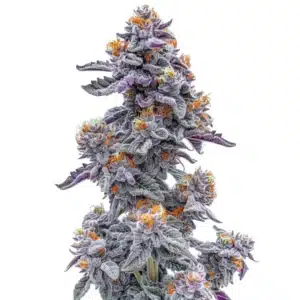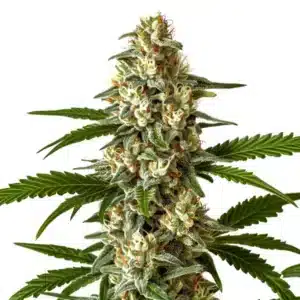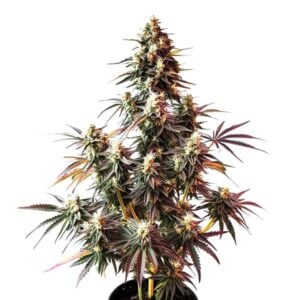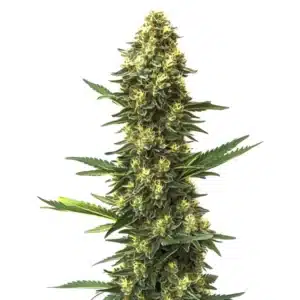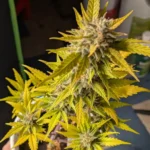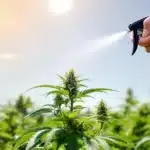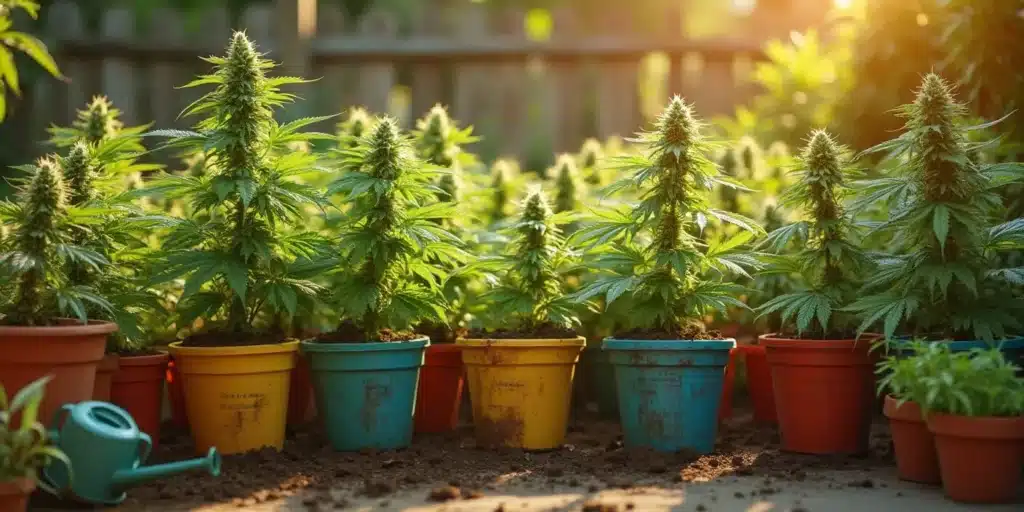
Growing Cannabis Outdoors in Pots: A Complete Guide
Growing weed outdoor in pot can be a rewarding and enjoyable experience, especially when you opt for pots to cultivate your plants. This method allows for greater flexibility and ease of management, enabling you to better control soil quality, nutrients, and hydration levels. Whether you are a beginner or have some experience, your choice of growing method can significantly impact the results of your cannabis cultivation project.
Benefits of Growing Cannabis in Pots
One of the major advantages of growing weed outdoor in pot setups is the level of control you get over the soil quality. Each pot can be designed with a customized soil mix that meets the specific needs of different cannabis strains. This thoughtful approach ensures that your plants receive the optimal nutrients they require to flourish and produce quality yields.
Recommended Strains
Auto White Widow CBD
|
|
CBD | 10% – 12% (Medium) |
|
|
Type | CBD Autoflowering |
|
|
Yield | Low |
|
|
Phenotype | 40% Indica / 60% Sativa |
Ooze
|
|
THC | 19% - 23% (Medium) |
|
|
Type | Feminized |
|
|
Yield | Medium |
|
|
Phenotype | 70% Indica / 30% Sativa |
- Soil Control: By selecting your soil composition, you can improve essential factors such as drainage, aeration, and nutrient retention, making a significant impact on plant health.
- Mobility: The portability of pots allows you to easily move them based on changing weather conditions, sunlight availability, or even for discreet placement if necessary.
- Reduced Pest Issues: Growing in pots often minimizes exposure to soil-borne pests and diseases, providing a cleaner, healthier growing environment.
Additionally, outdoor growing in pots reduces the potential for nutrient leaching that can occur in ground soil, especially in regions with heavy rainfall. This proactive measure helps keep your plants nourished and healthy. Plus, pot cultivation can make harvesting more convenient, as you can elevate the pots to a comfortable height for easier access.
Promos & Deals
Choosing the Right Pots
he first step in your outdoor cannabis journey is selecting the right pots. Size plays a crucial role in this decision. For young plants, smaller pots are fine as a starting point, but your plants will require larger pots as they grow and spread their roots.
You can grow in both large and small pots, but the size of the plant will depend on how much root space it has. The more the roots can grow downward, the more the plant can grow upward. So, the bigger the pot, the better. Ideally, pots around 50L are recommended to simplify care and ensure consistent growth. The more soil the plant has access to, the more it will grow in both size and vigor.
If you choose small pots, you’ll need to water more frequently and supplement with additional nutrients, since the plant will quickly use up what’s available in the limited soil. That’s why larger pots generally make things easier and reduce the risk of common issues during the grow cycle.
Consider these perspectives when choosing pots:
- Size: Opt for pots that are at least 5 gallons for outdoor growth. This sizing allows ample space for roots to expand and absorb nutrients effectively. Larger pots give the roots more room and reduce the need for constant maintenance.
- Material: With various options like plastic, fabric, and clay, each material presents unique pros and cons. For instance, fabric pots allow for better air circulation for the roots, while plastic pots are lightweight and cost-effective. However, plastic pots—especially dark-colored ones—don’t insulate well and can overheat in the sun, burning roots. White pots are better as they reflect light and stay cooler. Even better, clay or ceramic pots provide excellent temperature insulation and are ideal for hot climates.
- Drainage: Ensure your pots have enough drainage holes. This is key to preventing excess moisture, which can harm your plants. Observing drainage will help maintain a healthy environment for root systems.
Another important factor is insulation. Pots are going to be exposed to many hours of sun, and if they heat up too much, the roots can get burned this could kill the plant. That’s why material and placement matter.
When growing weed outdoor in pot, also consider insulating the pot from the ground itself. Cement or tile floors can get very hot under the sun, transferring heat to the pot and damaging the roots. Many growers place something between the pot and the ground, like wooden blocks or pallets, to lift the pots and prevent direct contact with the hot surface. This not only protects the root zone but also allows better air circulation underneath.
Ultimately, selecting the right pot can make a big difference in your growing experience, so take your time and choose wisely!
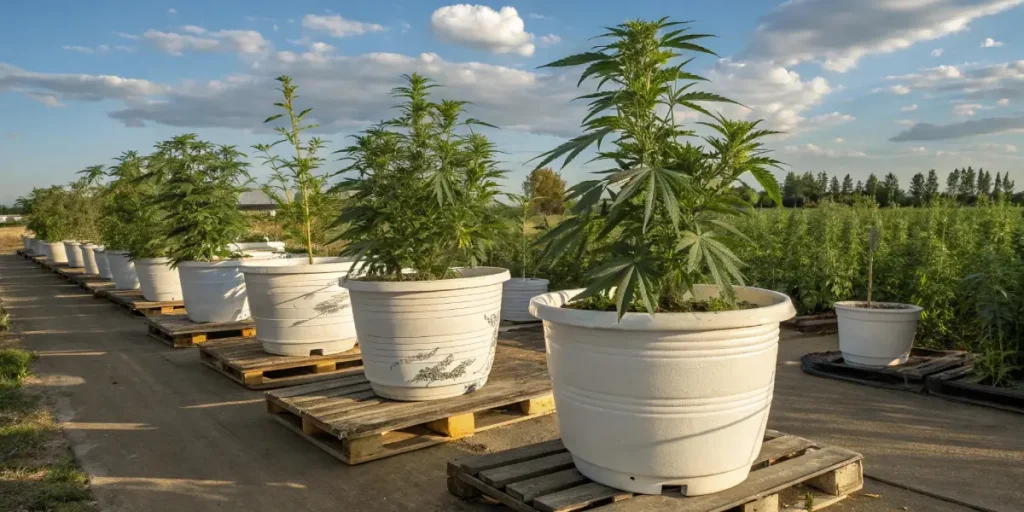
Types of Pots
There are various types of pots available on the market, each with its own set of benefits and drawbacks:
- Plastic Pots: Lightweight and usually budget-friendly, plastic pots retain some moisture. However, they may lead to overwatering if growers are not vigilant.
- Ceramic Pots: While visually appealing and heavy enough to provide stability, ceramic pots can be pricier and more challenging to transport.
- Fabric Pots: These are fantastic for drainage and aeration, promoting robust root growth. They tend to be affordable and environmentally friendly, too.
- Terracotta Pots: Known for excellent drainage, terracotta allows for air circulation but can dry out quickly, requiring more frequent watering.
Choosing the appropriate size is equally important. Larger pots can support more soil and nutrients, which is crucial for robust growth, yet they can be unwieldy. For most outdoor cannabis plants, a pot size between 5 to 10 gallons is recommended to strike a balance between root growth and ease of handling.
Preparing the Soil
The soil you use can dramatically affect the health and growth of your cannabis plants. Start by selecting high-quality soil and consider enriching it with organic material like compost or worm castings. These additions will enhance the soil’s nutrient profile and improve its physical structure.
Soil Mix Components
A properly balanced soil mix is imperative for nurturing healthy plants. Some essential components to consider in your mix include:
- Organic Compost: This serve as a nutrient booster while introducing beneficial microorganisms that work to break down organic matter.
- Coco Coir: Often hailed for its incredible water retention and aeration capacities, coco coir can support healthier root systems.
- Pearlite or Vermiculite: These materials enhance drainage and promote root access to oxygen, crucial for plant health.
Make sure to check that the pH level of your soil falls between 6.0 and 7.0 for optimal nutrient availability. You can easily check the pH with a testing kit found in garden centers, allowing you to make necessary amendments. Proper pH balance not only ensures your plants can uptake nutrients effectively, but it also plays a vital role in their overall vitality.
Nutrient Management
Growing weed outdoor in pot requires careful attention to nutrients, which are fundamental for your cannabis plants’ health. As the plants mature, understanding how to cater to their changing nutrient needs—particularly during the vegetative and flowering stages—can lead to improved yields and overall quality.
Types of Nutrients
Cannabis plants require two main types of nutrients: macronutrients and micronutrients, which serve distinct functions.
- Macronutrients: Key players include nitrogen (N), phosphorus (P), and potassium (K). These nutrients are needed in larger quantities, with nitrogen supporting vegetative growth, phosphorus promoting root and bloom development, and potassium ensuring plant health.
- Micronutrients: Elements such as iron, magnesium, and calcium, though required in smaller amounts, are vital for particular growth processes.
Using a balanced fertilizer specifically designed for cannabis can streamline the feeding process. Always adhere to suggested guidelines to prevent over-fertilization, which can harm your plants.
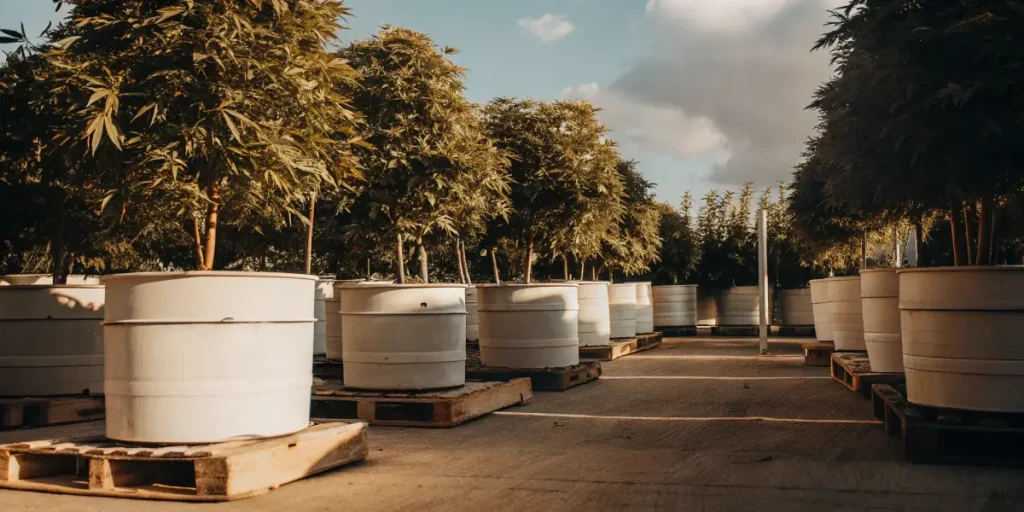
Watering Techniques
Growing weed outdoor in pot requires striking the perfect balance with watering, which can be a challenge. Overwatering can quickly lead to root rot, while insufficient water can stress your plants and stunt their growth.
Watering Guidelines
Here’s a simple approach to watering your outdoor cannabis plants:
- Check Soil Moisture: Stick your finger into the top inch of the soil; if it feels dry, it’s time to water!
- Water Thoroughly: Ensure you water until you see moisture draining from the bottom of the pot, confirming the roots are well-hydrated.
- Timing: Watering in the early morning or late afternoon is best, it reduces evaporation loss and helps the plants absorb water more efficiently.
Be mindful of external factors such as weather conditions and temperature, which can influence how quickly your plants dry out. Adjust your watering schedule accordingly, particularly during hotter periods.
Light Exposure
Choosing the right location for your outdoor pots is crucial. Cannabis plants thrive on sunlight, with a minimum of six hours of direct sunlight each day being optimal for healthy growth.
Finding the Right Spot
Seek out an area that has:
- Direct Sunlight: Ensure plants are not overshadowed by trees or other structures that can block sunlight.
- Protection from Wind: It’s beneficial to place pots in sheltered spots, reducing the risk of damage from harsh winds.
- Accessibility: Aim for a location that’s easy for routine maintenance like watering, feeding, and harvesting.
As the growing season progresses, consider moving your pots to maximize sun exposure. This practice can optimize growth as the angle of sunlight shifts throughout the day.
Pest and Disease Management
Staying ahead of pest infestations and diseases is essential for nurturing healthy cannabis plants. Regular monitoring helps in catching issues before they escalate.
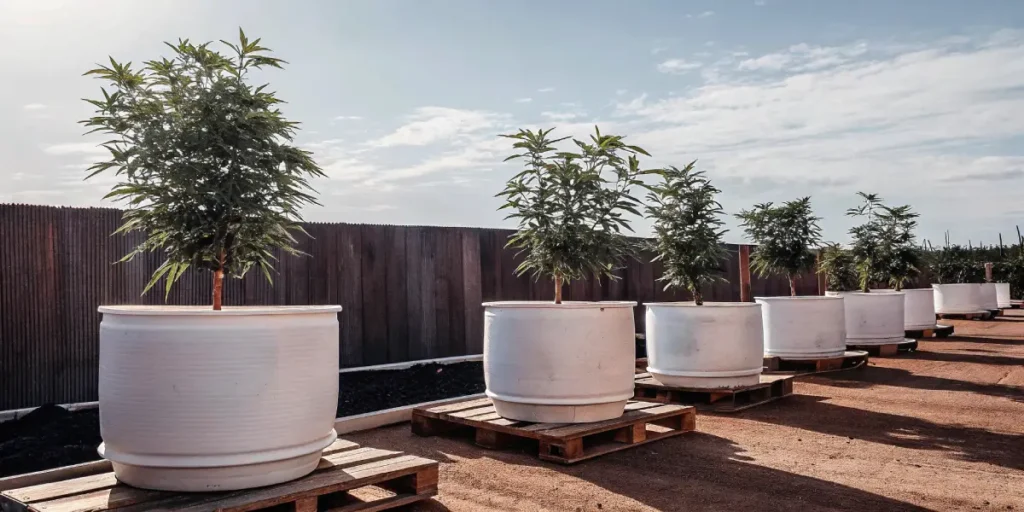
Signs of Issues
Pay attention to signs that may indicate pest or disease problems:
- Discolored Leaves: Yellowing or browning leaves could signal nutrient deficiencies or disease.
- Chewed Leaves: Look for indications of insects like caterpillars or aphids feasting on your plants.
- Sticky Residue: This could be a telltale sign of aphid or spider mite infestations.
Employing organic pest control methods can effectively maintain your plants’ health while being environmentally responsible. When growing weed outdoor in pot, introducing beneficial insects like ladybugs or lacewings can help keep pest populations in check. Making a habit of regular inspections and addressing issues promptly helps ensure a thriving growing environment.
Harvesting Your Cannabis
The moment to harvest your cannabis plants arrives when you can observe the right cues. The appearance of trichomes, the tiny, crystal-like structures on the buds, gives vital indicators for the ideal harvesting time.
Harvesting Tips
For an optimal harvest, keep these tips in mind:
- Check Trichome Color: The best time to harvest is when trichomes appear milky white with some amber tones, indicating ripeness.
- Timing: Harvesting in the early morning can yield higher resin content, resulting in better quality.
- Tools: Use sharp scissors or pruning shears to trim without harming the plant.
A proper drying and curing process enhances flavor and aroma significantly. After growing weed outdoor in pot, hang the buds in a cool, dark place with good air circulation, allowing them to dry for about a week. Once dried, place the buds in airtight jars, opening them periodically to let moisture escape—a crucial step known as curing.
Recommended Strains for Pot Cultivation
Certain strains excel when grown in pots outdoors. Here are a few popular options you might want to consider:
- Blue Dream: Known for its well-rounded effects, this strain is a favorite among novice and seasoned growers alike.
- White Widow: Praised for its hardiness and strong growth patterns, making it ideal for outdoor conditions.
- OG Kush: A classic among cannabis enthusiasts, it delivers substantial yields and thrives well outside.
Experimenting with different strains can also lead to discovering which ones work best for your specific environment and preferences. If you enjoy sharing the final product with friends or at social gatherings, selecting a popular strain can also enhance the experience.
FAQs about Growing Cannabis Outdoors in Pots
What size pot should I use for outdoor cannabis?
A pot size ranging from 5 to 10 gallons is generally recommended for outdoor cannabis cultivation. This size provides ample space for root development while ensuring the pots remain manageable for movement.
How often should I water my potted cannabis plants?
It’s essential to water when the top inch of the soil feels dry. This can vary with weather conditions, but typically, established plants will need watering every few days.
Can I use regular garden soil for my cannabis pots?
While using garden soil is an option, it is highly recommended to use a well-aerated potting mix specifically designed for cannabis. This specialized mix typically includes components such as peat, perlite, and organic matter that cater to the plant’s needs.
What pests should I watch for when growing cannabis outdoors?
Common outdoor pests include aphids, spider mites, and caterpillars. Regular monitoring and employing organic pest control methods can assist in managing these problems effectively.
Can I grow cannabis in a small balcony or patio?
Absolutely! Even small spaces like balconies or patios can be suitable for growing cannabis in pots. Just ensure they receive enough sunlight and that you use appropriately sized pots for your space.


